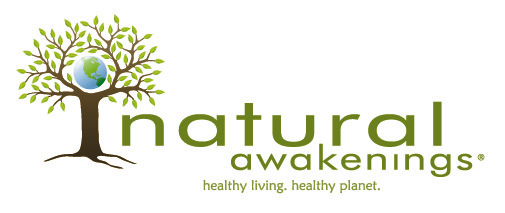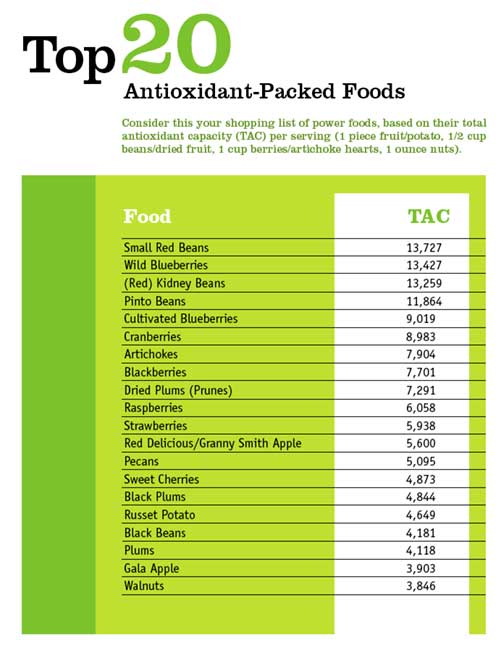Our Blog
Scientific Reasons Why Many Multivitamins Don’t Work And What To Do About It
 In the recent months there had been a flood of articles claiming that multivitamins are not effective. Two recent research studies showed no positive effect from taking multivitamins for brain health and for prevention of cardiovascular disease and cancer (see references [1,2] below).
In the recent months there had been a flood of articles claiming that multivitamins are not effective. Two recent research studies showed no positive effect from taking multivitamins for brain health and for prevention of cardiovascular disease and cancer (see references [1,2] below).
So should you stop taking multivitamins? And is there a need for supplemental vitamins and minerals to begin with?
Surprisingly, the answer is Yes to both questions.
Nowadays, most people are unable to obtain all the vitamins and minerals that their bodies need from diets alone. There are two main reasons. First, the food is often grown in mineral-depleted soils and does not have rich nutritional content. Second, most of us do not have enough time to plan and cook balanced and nutritionally diverse diets. In fact, according to research done by Dr. Misner, only about 10% of Americans get sufficient quantity of all the essential micronutrients from their diets [3]. Thus, 90% of Americans do need supplemental vitamins and minerals to avoid developing nutritional deficiencies and stay healthy. However, taking all-in-one multivitamins is not a solution.
Why all-in-one multivitamins do not work?
There are three scientifically established reasons that explain why all-in-one multivitamins are so ineffective.
Reason #1
Some vitamins and minerals inhibit absorption of each other up to 5-fold when taken together. Scientists have discovered negative interactions and significant decrease in absorption in the following micronutrient pairs: calcium and iron [4], manganese and iron [5], calcium and zinc [6], and several others. All-in-one multivitamins do not take into account these interactions and mix all vitamins and minerals into one pill. As a result their absorption is poor.
Reason #2
Fat-soluble vitamins (A, E, D, K), carotenoids, coenzyme Q10 and some other micronutrients need presence of fat to be absorbed well [7,8]. All-in-one multivitamins do not include fat. If they are taken on an empty stomach or with food that does not contain fat, fat soluble ingredients will be minimally absorbed.
Reason #3
Some vitamins and minerals have energizing effect on the body, while others have relaxing effect on the body. For example, vitamin B12 and coenzyme Q10 have energizing effect on the body [9,10]. Minerals calcium and magnesium have a relaxing effect [11]. It is best to take energizing micronutrients during the first half of the day and relaxing micronutrients at night. All-in-one multivitamins put all vitamins and minerals together without regard for their action on the body. Thus many people do not feel any immediate effect from taking multivitamins.
If all-in-one multivitamins do not work, how can people obtain additional vitamins and minerals that their bodies need?
In order for supplemental vitamins and minerals to absorb well, they need to be taken in correct combinations and at the right times of the day. Below are guidelines from nutritional scientists for specific vitamins and minerals:
Best taken during the first half of the day: B1, B12, vitamin C, antioxidants, iron, CoQ-10
Best taken in the evening: calcium, magnesium, potassium
Best not taken together: iron and calcium, copper and zinc, zinc and iron, zinc and calcium, coffee/tea and iron/calcium
Best taken with fat-containing meal or together with fish oil: vitamins A, D, E, K, carotenoids (beta-carotene, lycopene, lutein, astaxanthin), CoQ-10
Scientists at Vital Formulas have spent several years studying and analyzing interactions between micronutrients. They came to the conclusion that there is a definite need to change the way multivitamins are taken. This has led to creation of Balanced Trio nutrient complex. Balanced Trio is the only product on the market that group vitamins and minerals by synergy and according to the time of day taken. Balanced Trio also includes fat in the form of omega-3 fish oil with a serving of fat-soluble micronutrients.
When it comes to vitamins and minerals, the key is not just what you take, but what your body absorbs.
[1] Long-term multivitamin supplementation and cognitive function in men: a randomized trial. Grodstein F. et al. Ann Intern Med. 2013 Dec 17;159(12):806-14.
[2] Vitamin, Mineral, and Multivitamin Supplements for the Primary Prevention of Cardiovascular Disease and Cancer: U.S. Preventive Services Task Force Recommendation Statement. Moyer VA. Ann Intern Med. 2014 Feb 25. doi: 10.7326/M14-0198.
[3] Food alone may not provide sufficient micronutrients for preventing deficiency. Bill Misner. J Int Soc Sports Nutr. 2006; 3(1): 51–55.
[4] Calcium supplementation: effect on iron absorption. Cook J.D., et al. Am J Clin Nutr. 1991; 53: 106–11.
[5] Competitive inhibition of iron absorption by manganese and zinc in humans. Rossander-Hulten L., et al. Am J of Clin Nutr. 1991; 54: 152–6.
[6] High dietary calcium intakes reduce zinc absorption and balance in humans. Am J Clin Nutr. 1997 Jun;65(6):1803-9.
[7] Influence of dietary fat on beta-carotene absorption and bioconversion into vitamin A. Ribaya-Mercado JD. Nutr Rev. 2002 Apr;60(4):104-10.
[8] Vitamin D fact sheet for consumers. National Institute of Health. http://ods.od.nih.gov/factsheets/VitaminD-QuickFacts
[9] Vitamin B12 (cobalamin). University of Maryland Medical Center. http://umm.edu/health/medical/altmed/supplement/vitamin-b12-cobalamin
[10] Clinical aspects of coenzyme Q: Improvement of cellular bioenergetics or antioxidant protection? Littarru, Gian Paolo, et al. Handbook of Antioxidants, Eds. Enrique Cadenas, Lester Parker, New York: Marcel Dekker, Inc. 1996, pp. 203-239.
[11] The multifaceted and widespread pathology of magnesium deficiency. S. Johnson. 2001. Med Hypotheses. 2001; 56(2).
Interview with Vital Formulas’ Founder

Below you can listen to a recent interview of our founder, Natalia Lukina, with the editor of Natural Awakenings magazine. They discuss vitamins, minerals, interactions between the nutrients, healing foods and other health and supplements related topics.
Understanding Vitamin D: its role, recommended level, your needs
In the recent years there has been a flood of information regarding vitamin D. It is essential for optimal immunity, bone health, functioning of cardiovascular and nervous systems and many other vital functions. Human studies show that higher levels of vitamin D protect against cancer and other age-related ailments. Vitamin D is found in cells throughout the body.
Due to its importance, many doctors are now routinely testing for vitamin D level. The most commonly used test is a 25(OH)D test, also called 25-hydroxyvitamin D. By the standards set by the Vitamin D Council and Endocrine Society, the optimal level of vitamin D is 40 to 80 ng/ml. Blood levels of vitamin D lower than 20 to 30 ng/ml have been associated with falls, fractures, cancer, autoimmune dysfunction, cardiovascular disease and hypertension.
If your levels are below 40 ng/ml consider taking vitamin D3 supplement. Please review the chart below to determine how much supplemental vitamin D3 you need.
When taking quantities of supplemental vitamin D3 of 2,000 IU or higher, it is important to remember that high intake of vitamin D3 requires adequate intake of vitamins A, K and minerals magnesium and zinc.
Current standard recommended dietary intake for vitamin D is between 400 IU and 800 IU. For most people living in the northern hemisphere it is not sufficient to maintain plasma level of 40 ng/ml, especially in the winter months. If you are not vitamin D deficient dietary intake of 600 IU during the summer and 1200 IU during the winter should be sufficient. Try to maintain the balance between supplemental and naturally occurring vitamin D3. The best source of dietary D3 is oily fish. 3.5 oz serving of wild Alaskan salmon contains between 500 to 1000 IU of vitamin D3 depending on the brand and season. Farmed salmon contains only about a third of D3 amount of wild salmon. 3.5 oz serving of farmed salmon contains between 150 to 350 IU of vitamin D3. Mackerel and sardines are also good natural sources of vitamin D3. A cup of fortified milk or orange juice contains about 100 IU of vitamin D, usually in D2 form, which is not as easily absorbed as D3.
Balanced Trio multivitamins include 600 IU of vitamin D3 and complement healthy intake of vitamin D3 from the diet.
If you would like to read more about importance of vitamin D3, there is an interesting article by Marcelle Pick, NP – Is Vitamin D Deficiency Casting A Cloud Over Your Health?
Top 5 Vitamin Myths
Myth #1
“Vitamins and minerals in food-based, whole-food, or RAW multivitamins are derived from fruits, vegetables and real foods”
Truth: Food-based vitamins are made from minute amounts of dry food plus synthetic vitamins cultured with yeast.
While marketing claims often make one believe that food-based vitamins are derived from real food, the reality is quite different. Most food based vitamins on the market can be divided into two groups:
First, consists of mostly synthetic vitamins and minerals cultured with a small amount of whole foods and yeast. The supplement facts panel of such vitamins lists vitamins and minerals without specifying the forms of these vitamins and minerals. It also lists whole foods blends (often organic). Note that 1000mg is roughly equal 1/4 teaspoon. You will also see a statement that “nutrients are created through cultivation” or similar. This means that mostly synthetic forms of vitamins and minerals listed on the label were combined with a minute amount of whole foods and cultured for period of several days with yeast. After that the mixture was dried and put into tablets.
Second, consists of vitamins and minerals derived from yeast (Saccharomyces cerevisiae). Yeast is naturally rich in some B vitamins. To obtain yeast rich in vitamins and minerals that it normally does not contain in sufficient quantities, yeast is grown in a bath of synthetic vitamins or minerals which it absorbs. When the yeast is dried the vitamins and minerals obtained from it are called food based.
Myth #2
“Whole food concentrates added to multivitamins are very beneficial for your health”
Truth: Choose vitamin supplements with highly concentrated fruit and herbal extracts. Consume fruits and vegetables as part of a healthy diet.
Amounts of whole food concentrates that can be added to multivitamin formulas are very small. On the labels you will generally see between 100mg to 1000mg of food complex, which is less than half a teaspoon. How much benefit can one get from eating such a minute amount of dry spinach or raspberry? It would be similar to eating a couple of blueberries or a leaf of spinach. It is best to eat regularly sufficient amounts of fruits and vegetables. If supplementation is needed, look for high quality greens formula or highly concentrated whole food extracts.
Myth #3
“The higher %DV of vitamins and minerals is in multivitamins, the better they are for you”
Truth: For long term use choose vitamin supplements with amounts of vitamins and minerals close to RDA (recommended daily amounts).
As with many things, more is not always better. Long term effects of daily supplementation with mega doses of vitamins and minerals have not been sufficiently studied. Minerals and fat soluble vitamins can accumulate in the body and become toxic. Water soluble vitamins cannot be stored in the body and excess is eliminated. This can put unnecessary stress on kidneys and liver. If one desires to take high doses of vitamins and minerals it is best to do so under the guidance of qualified health care practitioner.
Myth #4
“It does not matter if I take all my vitamin supplements at the same time or not.”
Truth: Some vitamins and minerals should not be taken together. One should always pay attention to their interactions.
Studies show that some vitamins and minerals can greatly inhibit absorption of one another, examples include Ca and iron, magnesium and manganese, copper and zinc taken together. To maximize absorption these vitamins and minerals should be taken at least 3-4 hours away from each other. What’s good in taking the multivitamins if they won’t be properly absorbed.
Myth #5
“Multivitamin supplements can be taken any time of day and with any food”
Truth: Some vitamins have energizing effect on the body, while others have relaxing effect. Certain foods can inhibit or enhance absorption of specific vitamins and minerals.
In fact, some foods can inhibit or enhance absorption of vitamins and minerals. For example, iron taken with coffee, tea or milk will be very poorly absorbed (less than 20% absorption rate). Fat-soluble vitamins, coenzyme Q10 and carotenoids taken with a light snack that does not contain fat will also be very poorly absorbed. On the other hand, vitamin C greatly enhances iron absorptions and fat greatly enhances absorption of all fat soluble nutrients. Most multivitamins on the market are best taken with breakfast (if one eats breakfast) or lunch. Taking standard multivitamins in the evening might have energizing effect and is generally not recommended. Balanced Trio multivitamins are unique in that they are specifically created to be taken three times a day: Morning, Mid-day and Evening.
Don’t fall victim to these myths! Balanced Trio multivitamins were formulated by taking into account latest research on vitamin interactions and dosage.
Learn more about Balanced Trio.
How to get the most from your supplements
Take a look at the following infographics to find out how to get the most benefits from your supplements. It will show you which supplements should be taken together and which should not. You will also learn what time of day is most appropriate for taking each supplement.
Don’t want to juggle a multitude of bottles and don’t want to keep track of all the timings and interactions? Take Balanced Trio multivitamins. Our scientists have done all the research for you and conveniently divided all the nutrients into Morning, Mid-day and Evening formulas.
Balanced Trio multivitamins were formulated by taking into account all the vitamin interactions and optimized for the time of day taken. Get the most of your supplements – take Balanced Trio.
Best Supplements for Your Heart

To stay healthy it is important to consistently take good care of one-self and relaxed fall atmosphere is a perfect time for that. Today we will talk about ways to keep your heart strong and healthy.
There are three key components to keeping the heart healthy
– moderate physical activity
– stress management
– healthy foods and supplements
1. Moderate physical activity Sedentary lifestyle is damaging to many parts of our body, but it is especially damaging to the heart and cardiovascular system. In one of the studies researchers utilized data from the Women’s Health Initiative Observational Study (WHI-OS), which followed more than 93,600 women ages 50 to 79 years old for about eight years. Based on periodic surveys and clinic visits completed by study participants, researchers found that women sitting 10 hours a day or more had significantly greater risk for heart disease, heart attack and stroke compared to women sitting 5 hours a day or less, regardless of how much they exercised. However, cardiovascular risk was greatest among women who reported sitting 10 or more hours a day and got little to no physical activity. Researchers also found that prolonged sitting negatively impacted heart health the most among women who were overweight or greater than 70 years old. You probably knew that sitting for a long time is not good for you and now it has been confirmed by data. If you have to sit for long periods of time, make sure to take a break every 1-2 hours and go for a stroll. Any moderate physical activity that you enjoy will benefit your heart. Thus, heart healthy rule #1 – keep moving.
2. Stress management Can stress hurt your heart? The evidence is piling up that the answer is—yes, stress is damaging for your heart. “There are studies to show that stress is comparable to other risk factors that we traditionally think of as major, like hypertension, poor diet, and lack of exercise,” says Kathi Heffner, PhD, assistant professor of psychiatry at the Rochester Center for Mind-Body Research at the University of Rochester Medical Center in New York. Great ways to fight stress include meditation, yoga, laughter, music, massage, Reiki and being in nature. Heart healthy rule #2 – take care of the stress.
3. Healthy foods and supplements The easiest way to help your heart is through foods and supplements, since it requires the least time commitment. You all know that fruits and vegetables are good for you. Here I will concentrate on a few specific food items that will make the most difference. When cooking switch to olive oil for all or most of your cooking needs (you might find the taste too strong in the beginning, but after a few weeks most people don’t notice it much). Incorporate flax seeds and flax seed oil into salad dressings and other meals. Eat wild caught fish at least two times a week, Alaskan fish is the best. Drink hawthorn tea regularly. Use the following three supplements: fish oil, CoQ10 and hawthorn berries. These three supplements are beneficial for anybody after the age of 40 and should be taken regularly. If you already experience any heart issues, you should feel noticeable improvement within a week of starting to take these supplements. You might also consider adding a magnesium supplement.
Our multivitamins complex Balanced Trio includes all three of these supplements plus all the essential vitamins and minerals. In addition the Evening formula includes relaxing, stress-fighting herbs and magnesium in the easily absorbed form. Visit http://www.vital-formulas.com/balanced-trio/ for more details.
Easy and Fun Ways to Stay Fit
 Staying fit is important at any age, but it is becoming more and more important as we age. There are numerous benefits to regular exercising and staying fit. Among them, healthier heart and blood vessels, improved sleep and mood, prevention of type 2 diabetes, some forms of cancer, osteoporosis and other diseases. All in all people who exercise regularly are healthier, happier and live longer.
Staying fit is important at any age, but it is becoming more and more important as we age. There are numerous benefits to regular exercising and staying fit. Among them, healthier heart and blood vessels, improved sleep and mood, prevention of type 2 diabetes, some forms of cancer, osteoporosis and other diseases. All in all people who exercise regularly are healthier, happier and live longer.
How do you find the most appropriate way to exercise? How do you keep doing it regularly?
Practicing self-discipline is always hard, so the best way to exercise is to make it a part of your daily routine, then it will becomes natural and integral part of your daily lives. If you have time in the morning, even a few minutes, start your day with a light morning exercise or a walk. This will wake up your body, help your energy flow and make you feel refreshed. It is also a great practice to finish your light morning exercises with a cold shower or a contrast shower. Contrast shower is much easier if you don’t really like cold water. All you do is iterate between cold and warm water finishing with the cold one. As time progresses, you will be able to handle cooler and cooler water. Cold shower in the morning has been shown to strengthen immunity and improve blood circulation.
To gently incorporate exercises into your day, try to fit small bits into your regular daily activities. For example, if you live near a store, a library or a post office, instead of driving there, consider walking. When you go shopping and there are several destinations (a store, a bank, a post office) that are close to each other consider walking from one to the other instead of driving. When parking, park your car in the furthest corner of the parking lot. It is essential for our bodies to keep moving throughout the day and not just for a short period of time that you designate for exercise. If you work all day, take breaks and go for a stroll. Consider always taking a stroll during your lunch time, suggest this to your co-worker friends and do it together. Walking is an amazing exercise. It is both gentle and effective. I suggest that for one week you look for all the small opportunities you can find during the day to walk more.
Walking is the best exercise for most people. To rip the most benefits do not do it on the treadmill. Go outside, to the park or a green neighborhood. The nature calms the mind and improves the mood. Studies by researchers in England and Sweden have found that joggers who exercise in a natural green setting with trees, foliage and landscape views, feel more restored, and less anxious, angry and depressed than those runners who burn the same amount of calories in gyms or other urban settings. I am sure the same effect would hold for walking. So even if you have to drive a few miles to find a little green, it’s worth it! I would like to share with you a story about my grandfather. Ten years ago he had a difficult heart bypass surgery and a pacemaker installed. His doctor’ predictions were not very optimistic. However, he told him that if he wants to live the longest he must walk every day 4 miles outside in any weather. He really took this suggestion and walked diligently for the last ten years. He is 84 now, very active, self-sufficient and intends to live and walk for many more years.
There is also an interesting research by Dr. Hiroshi Nose, a professor of sports medical sciences at Shinshu University Graduate School of Medicine in Japan, who has enrolled thousands of older Japanese citizens in an innovative, five-month-long program of brisk, interval-style walking (three minutes of fast walking, followed by three minutes of slower walking, repeated 10 times). The results have been striking. “Physical fitness — maximal aerobic power and thigh muscle strength — increased by about 20 percent,” Dr. Nose wrote in an e-mail, “which is sure to make you feel about 10 years younger than before training.” The walkers’ “symptoms of lifestyle-related diseases (hypertension, hyperglycemia and obesity) decreased by about 20 percent,” he added, while their depression scores dropped by half. It is end of summer now and is a perfect time to start walking more, it no longer hot and not yet cold. If you start daily walks now, you will easily transition into walking in the colder weather.
Another great form of exercise that I would like to bring to your attention is yoga. It trains muscles and increases flexibility and is a great alternative to weight lifting that might be too hard for the joints for some people. I suggest starting yoga at a yoga studio. Exercising with other people is generally much more fun than alone. Most people in yoga studios are friendly, welcoming and very helpful. You will feel better, will make new friends and this will likely motivate you to continue with the practice. Yoga has countless benefits for your health that most people start feeling right away. Of course, in the beginning some of your muscles can hurt a little while getting used to all the stretching, but at the same time you will start enjoying greater flexibility and openness in your body. Studies have shown yoga to be effective and beneficial for such conditions as arthritis, hypertension, chronic pain, lung problems and insomnia. Give it a try!
Besides walking and yoga, there are many other wonderful forms of exercise. I have chosen these two because in my opinion they are the easiest to incorporate and have been shown in numerous studies to be very effective. Of course you can and should do any other physical activities that you enjoy, swimming, hiking, cross country skiing, zumba, tennis and there are so many options. Look for small and big opportunities to exercise. Maybe get a dog to always have an ardent walking partner or maybe a ping-pong table to have a fun way to exerciser at home, or maybe something else? Take good care of yourself, stay fit and healthy!
Importance of Antioxidants and Antioxidant-rich Summer Foods
Antioxidants. You read and hear about them all the time. But do you really know what they are, why they are so important and how you can get the most from your diet?
The answers to these questions is what I want to discuss with you in this article.
Antioxidants are natural substances that protect our cells against the effects of free radicals. They stop or limit the damage caused by free radicals. Normal body functions such as breathing or physical activity and environmental exposures like tobacco smoke and pollution produce substances called free radicals that attack and damage healthy cells and DNA. When these healthy cells are weakened, they are more susceptible to cardiovascular disease, certain types of cancers and other diseases. Antioxidants, such as vitamins A, C and E, carotenoids, which include beta-carotene, lycopene and lutein, help protect healthy cells from damage caused by free radicals.
Your body produces some antioxidants to fight off the free radicals formed by normal body processes. However, with constant exposure to environmental toxins and as we age, those are not enough and additional antioxidants need to be supplied by eating a healthy diet. Examples of antioxidant-rich foods include colorful fruits and vegetables, berries, grass-fed dairy products, fresh nuts and seeds, whole-grain products, grass-fed meats and salmon. Variety is important, because there are many different types of antioxidants that can protect you from different types of damage.
Studies suggest that a diet high in antioxidants is associated with a lower risk of cancer, cardiovascular disease, Parkinson’s disease, Alzheimer’s disease and macular degeneration. As a bonus, foods high in antioxidants are usually also high in fiber, low in saturated fat and cholesterol, and are good sources of other vitamins and minerals.
One of the most comprehensive studies of the antioxidant content of common foods was published in the Journal of Agricultural and Food Chemistry (06/2004). At the beginning of this post you can see the table listing 20 most antioxidant-rich foods that this study has identified.
As you see there are many fruits, vegetables and berries on the list. It is a summer time now so these are abound at our farmers markets and supermarkets. When choosing your produce look for local and organic items. Organic produce generally has higher nutritional content compared to conventional one. Local is important too, because valuable nutrients get lost during transportation. Also, fruits, berries and vegetables are often picked not fully ripe if they need to be transported long distance. This greatly diminishes their antioxidant and vitamin content. If you want to maximize the amount of antioxidants during your meals, try experimenting and creating as colorful a plate as you can. The more colors, the merrier and healthier. I personally love to make healthy smoothies during the summer months. One of our favorite recipes is peaches, blueberries, baby arugula or baby greens, flax seeds, a bit of coconut flakes or coconut oil, and occasionally some cocoa powder all mixed with a little water in a blender. Experiment and have fun!
Healthy Sun Exposure, Sunscreens, Vitamin D
It is summer time and we often hear much controversy about sun exposure. Is it good for you or not? How much should you get? After reviewing the latest findings we would like to share our opinions with you. It is well known that prolonged sun exposure can increase the risk of skin cancer. On the other hand, there are clear benefits to sun exposure that are very hard to obtain without it, such as enhanced mood and energy through the release of endorphins, melatonin regulation, protection against multiple sclerosis, treatment of some skin conditions. In the recent study scientists at the University of Edinburgh in the UK suggested that the heart-health benefits of sun exposure may outweigh the risk of developing skin cancer. The researchers found that when sunlight touches our skin, a compound called nitric oxide that helps lower blood pressure, is released into our blood vessels. It is possible that the effect is such that overall, sun exposure could improve health and even prolong life, because the benefits of reducing blood pressure, cutting heart attacks and strokes, far outweigh the risk of getting skin cancer. Another major benefit of sun exposure is the production of vitamin D as the result of the exposure to UV-B rays. Vitamin D is an essential nutrient, which deficiency is widespread in the United States and Canada. It is almost impossible to get all of the vitamin D that your body needs for the best health without some exposure to sunlight or supplementation.
Why is vitamin D so important?
In the recent years there has been a large number of research done on vitamin D. It has been confirmed that vitamin D decreases risk of all types of cancer, helps maintain strong bones, strengthens the immune system, helps the body regulate its blood sugar level and helps in preventing high blood pressure. All in all it is one of the most important nutrients and it is essential for the good health to obtain optimal amounts of it.
How can you obtain optimal levels of vitamin D?
Recent research has shown that sun exposure at higher latitudes (think US and Canada) before 10 am or after 2 pm will cause burning from sun’s UV-A rays before it will supply adequate vitamin D from UV-B rays. This finding may surprise you, as it did the researchers. It means that sunning must occur between the hours we have been told to avoid. Only sun exposure between 10 am and 2 pm during summer months for 20-120 minutes, depending on skin type and color, will form adequate vitamin D before burning occurs. On the other hand, the American Academy of Dermatology’s Position Statement on vitamin D concludes that “there is no scientifically validated, safe threshold level of UV exposure from the sun that allows for maximal vitamin D synthesis without increasing skin cancer risk.” Basically, when you expose your skin to sun, you get both positive and negative effects. Do the benefits outweigh the risks or vice versa? We believe moderation is the key. In our opinion 10-15 minutes of bare skin sun exposure without the sunscreen provides enough benefits with minimal risks. Since there is no consensus on the topic, it is best to discuss your specific situation with your health care provider. You should also pay attention to how you feel in the sun. Does it feel good and lifts your mood or does it tire you? Your body often knows what you need and it is important to listen.
What about sunscreens? Will exposure to the sun when wearing a sunscreen give you the same benefits as exposure without the sunscreen? While you will still get some positive effect from sun exposure when using a sunscreen, most of the positive effects including vitamin D and nitric oxide production will be greatly diminished or lost due to UV-B rays being blocked by a sunscreen.
We would like to review with you some information about sunscreens. There are two types. The first type is physical sunscreens. They reflect the light of your skin. On the label of such sunscreens you will see titanium dioxide and/or zinc oxide. The second type is chemical sunscreens. They destroy UV-A and UV-B rays inside your skin. There are many different chemicals that can be used in such sunscreens; the most common are PABA, avobenzone, oxybenzone, and many others. Physical sunscreens are considered much safer since they do not expose you to unnecessary chemicals. Their only drawback in my opinion is that they leave white marks on your skin when not fully rubbed in. Physical sunscreens do not give protection higher than SPF 35, thought this is sufficient for vast majority of people. SPF 15 will block the majority of UV-B rays (roughly 93%), SPF 30 will block more (roughly 97%), and anything over SPF 30 doesn’t really protect you much more than an SPF 30 product. For detailed information on safe sunscreens you can visit Environmental Working Group website. Our personal favorite sunscreen is Badger Unscented SPF 34.
Now back to vitamin D. If sun exposure is not a good option for you, you should consider taking a daily supplement. Many multivitamins include vitamin D. Make sure that it is the natural vitamin D3 (cholecalciferol) and not the synthetic substitute D2. Adults 19-70 need 600 IU of vitamin D a day. Adults over 70 need 800 IU units a day. Since vitamin D deficiency is common and highly detrimental for the health, many doctors test for vitamin D levels. Ask your doctor during your next physical to make sure you are not deficient. In the meantime consider taking good quality D supplement and/or moderate sun exposure.
We wish everybody a happy and safe summer! In the next post we will talk about the importance of antioxidants and antioxidant rich foods which are so abundant during the summer and early fall months.
GMO foods: Corporate Charlatans vs Organic Heroes
While there are still debates on whether GMO foods are safe or not, the scientists at Vital Formulas believe that there has not been enough research to prove that GMO foods are safe and do not cause any damage to the bodies over long-term use. There have been several studies that showed negative effects of GMO foods on reproductive system and increased risk for allergies. From our personal experience with our children, we know that their bodies can distinguish organic corn from non-organic GMO corn and organic wheat from non-organic GMO wheat. Some of our children would develop either skin or digestive reactions when given GMO grains, while having no reaction when given similar organic grains.
We are sharing this poster with you, so that you will recognize companies that support GMO foods and companies that oppose GMO foods. We encourage you to buy GMO-free foods when shopping for yourself and especially for your children.
When selecting ingredients for Balanced Trio vitamins we take great care to insure that they are GMO-free.







